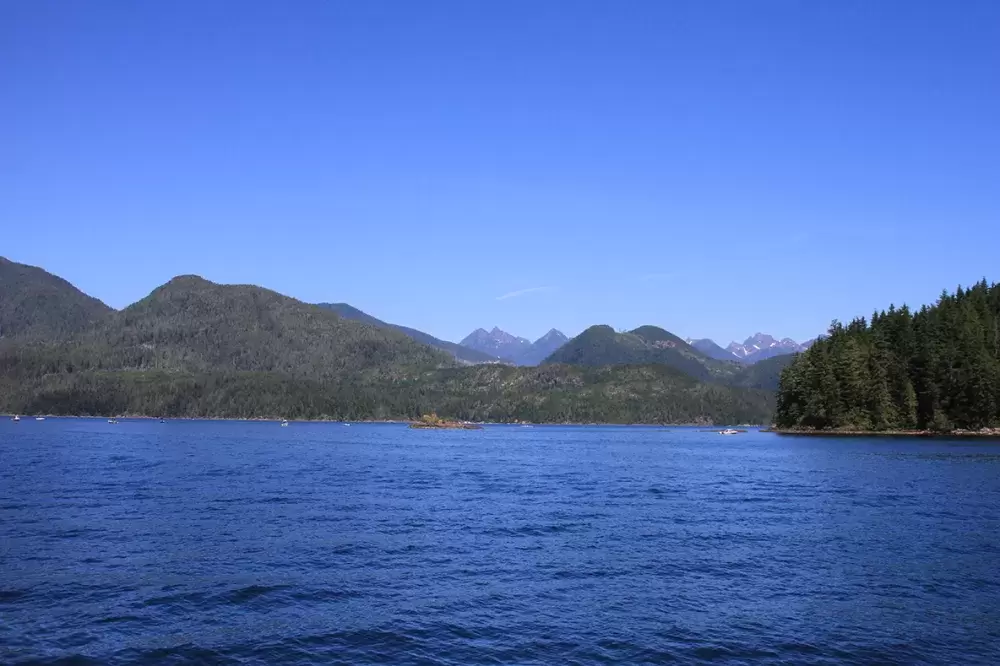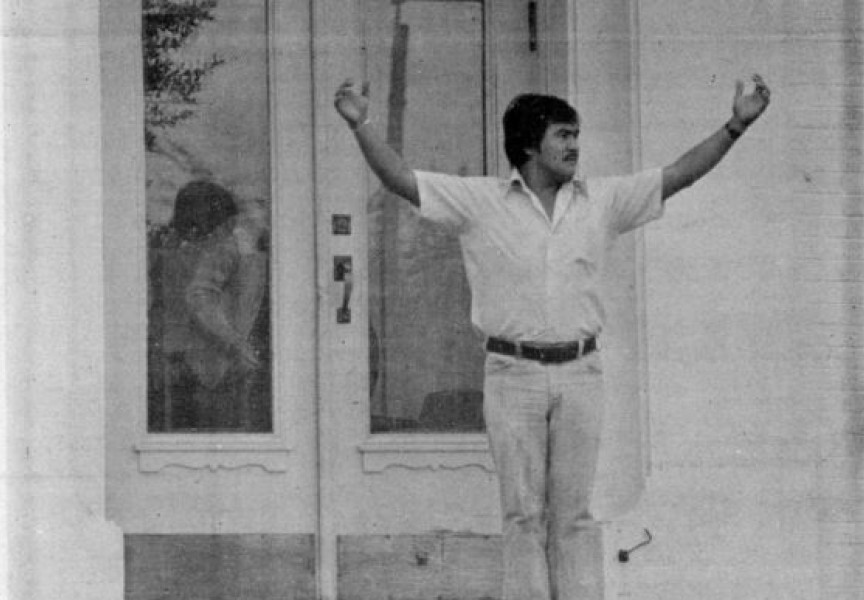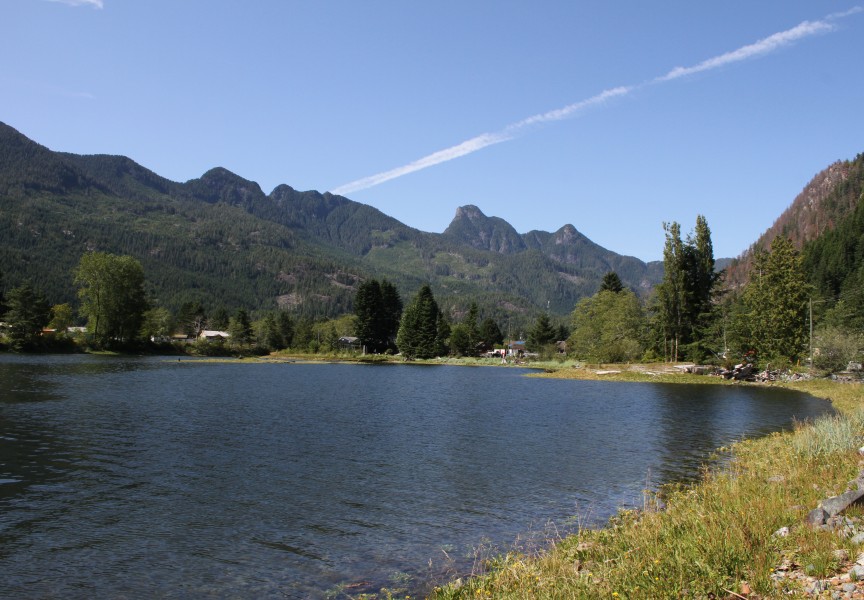The federal and provincial governments will partner to provide high-speed Internet access to rural and remote communities on the B.C. coast, including Nuu-chah-nulth nations.
The Connect to Innovate program was announced at a press conference in Vancouver on Jan. 17 by Jane Philpott, Canada’s minister of Indigenous Services. To underscore the magnitude of the project, Philpott was flanked by Citizens Services Minister Jenny Sims, Innovation Science and Economic Development Minister Navdeep Bains, and B.C. Parliamentary Secretary for Emergency Preparedness (and North Coast MLA) Jennifer Rice.
NTC President Judith Sayers said the move to provide broadband Internet access to remote communities is long overdue.
“Having high-speed Internet access in your community is almost a human right nowadays,” Sayers told Ha-Shilth-Sa.
Currently, remote communities plug along with a combination of dial-up and/or satellite, she said. The service is slow and costly, and it handicaps potential new businesses, particularly in the knowledge industry or service/tech.
“It is not fair for the Northern communities to be excluded,” Sayers said. “It is hard to get into business in remote communities without broadband access.”
Innovation Minister Bains underscored that point at the press conference.
“High-speed Internet service is a basic tool that all Canadians should have access to, regardless of their postal code,” Bains said. “Canadians need this service to do business, upgrade their education and build stronger communities. Thanks to our Connect to Innovate program, more Canadians will able to participate fully in the digital economy.”
The program includes the installation of 3.5 million metres of undersea fibre optic cable. Strathcona Regional District, home of the northern Nuu-chah-nulth nations, will receive $24.6 million from Ottawa and $8.4 million from the province to connect 131 communities and 63 institutions.
Sayers said she is hoping the cable-laying process does not have a negative environmental impact.
“I am sure they will consult with First Nations before they lay those kind of cables,” she noted.
Mowachaht-Muchalaht band administrator Kevin Kowalchuk said the initiative is expected to provide benefits for members across the board.
“It has been a long time coming,” he said. “Typically, remote areas all across the country are the last to receive this sort of support.”
That is understandable from a cost perspective, Kowalchuk noted, but is well recognized that those remote communities – including First Nations – now require high-speed Internet access to conduct their businesses and grow their economies.
“Here in the Mowachaht-Muchalaht administration office, we must be connected, in an effective way, to the rest of the world, because it is all digital. We deal with large amounts of data,” he explained. “We do have Internet – I am not sure what speed it is. But what I can tell you that at times – sometimes it is time-of-day or day-of-the-week – we experience slowdowns, where the Internet is very slow. This is no reflection on the companies providing it; it just is what it is.”
Kowalchuk said at times, those slowdowns have created major headaches in the administration.
“And I am glad that the initiative is providing ‘last-mile connections’ to individual homes,” he said.
Kowalchuk said he is hoping that, as a side benefit of installing high-speed Internet capability, the initiative will result in improvements to cellphone service in those same remote areas. That is an ongoing issue in Mowachaht-Muchalaht territory, from Gold River, to Tsaxana to Tahsis, he explained.
“With the new technologies, with cellphones, there is some ability, if you have WiFi or high-speed Internet service, you can start using your cellphone. I don’t know if that can be part of it, but it is all part of that ability to communicate with the rest of the world.”
Renowned indigenous artist Roy Henry Vickers serves on the board of CityWest Cable & Telephone, which will receive $9.3 million to connect 23 communities and 97 institutions in the mid-Island. Vickers, who operates the Eagles Aerie Gallery in Tofino, said he has already experienced the amazing transformation to high-speed Internet access.
“The way I became connected to the [CityWest] board, I had this fibre-optic cable connected to my house, and I was flabbergasted at the speed,” Vickers said. “I never expected to have such high-speed connectivity to my home.”
Vickers explained that, while he operates a business on Vancouver Island, his principal residence is “10 klicks (kilometres] upriver from Hazelton,” on Kispiox Valley Road.
“I am out in the wilderness. There are grizzly bears and black bears and moose in my yard,” he said. “I am way out there, yet I have this high-speed connection, and so does Kispiox, the village just above me, and Glenbow, the village just below me. The crazy thing now is, I have faster Internet speed now than at my art gallery in Tofino.”
Vickers said thanks to the initiative, even remote West Coast communities will also join the fibre-optic revolution.
“So the connectivity that we will have in our villages will enable us to bring learning to our children,” he said. “You could ‘bring me into a classroom’ in a remote village, though I live away up North. Education is something that we have been lacking in our remote communities, and this will enable us to do things we’ve never been able to do.”
Vickers said his own sons, now 14 and 16, have been “asking for years” to update their home Internet access. His then-provider promised upgrades for six years, before the fibre-optic cable arrived.
“At first, I had satellite, then landline – it was copper wire. Now I have fibre-optic and both of my children are so excited about what they have access to.”
And for Nuu-chah-nulth on Vancouver Island, that long-awaited dream is about to come true.







